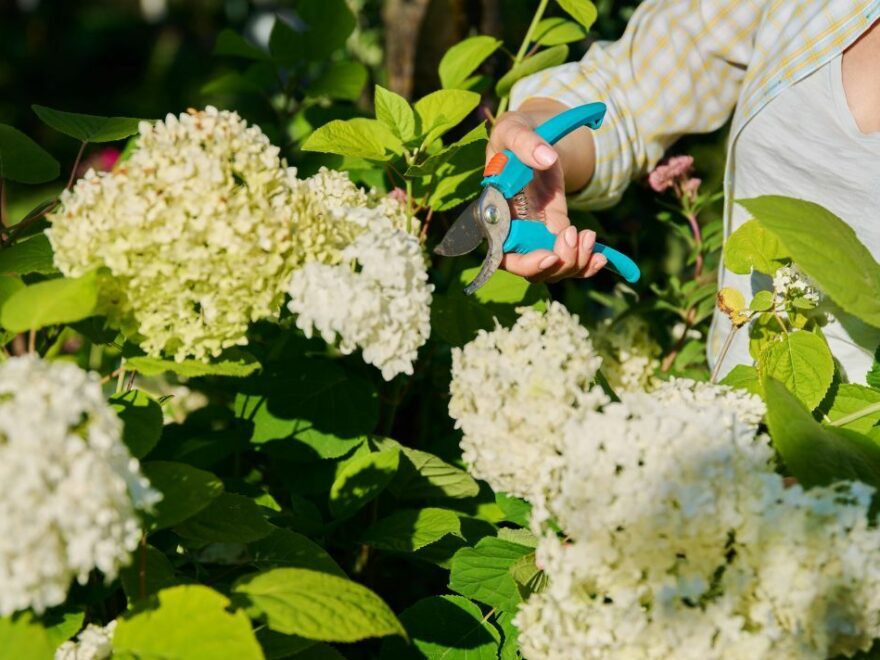Alan Titchmarsh shows off his hydrangeas
There are lots of plants which need pruning during the spring months, and this can help to make room for more growth and encourage more flowers for the growing season ahead. If certain plants are left unpruned throughout the spring, they can become a mess in summer, which could affect the plant as well as the look of your garden.
Camellia
Camellias are easy to grow, ideal for containers, which makes them very appealing for gardeners. They also come in various different colours, suitable for a wide variety of gardens.
According to Hilliers, gardeners should only prune these flowers when the flowers have faded and on plants that are at least three years old.
They don’t need pruning to promote flowering, however, some can reach great height if they are left unpruned.
If your space is limited and they are starting to look a little tall, it might be time to get the secateurs out.

To prune them, remove any congested stems from the centre, but they can be shaped to your liking.
Hardy fuchsia
Hardy fuchsias are a great plant to introduce into the garden, as their gorgeous colour can last well into the autumn months.
They grow well in containers or borders, as long as they are grown in sun or partial shade.
Fuchsias can be cut back in April, as long as the risk of frost has passed, so make sure to check when you could be getting some late frost.
Don’t miss…
Gardening pros share seven easy fruit and vegetables to sow now [LATEST]
‘Vital’ things to ‘consider’ when planting flowers to avoid ‘havoc’ [COMMENT]
Most efficient kitchen appliance by ‘far’ costs just 5p per hour [EXPLAINER]
The Royal Horticultural Society (RHS) explained: “Fuchsia may need cutting back to near ground level.
“This stimulates development of strong new growth on which flowers will be produced in late summer.”
Gardeners should mulch these plants after pruning to help retain moisture for the plant as well as improve the soil.
Hydrangeas
According to the RHS, most hydrangea pruning is carried out in late winter or early spring, so now is a great time.

However, the climbing hydrangea is pruned after flowering in summer, so make sure to check which variety you have before giving it a cut.
It is also important to note that different types of hydrangea must be pruned in different ways, as some flower on old wood, while some flower on new wood.
Make sure to check which type you have to prevent problems with its flowering.
According to the RHS, dead blooms on moped hydrangeas can, in mild areas, be removed just after flowering, although it is best to leave them on the plant over winter to provide frost protection.

These should be removed in early spring, cutting back the stem to the first strong, healthy pair of buds down from the faded bloom.
The experts added: “Lacecaps are hardier, and the faded flowers can be cut back after flowering to the second pair of leaves.
“This is below the head in order to prevent seed developing, which saps energy from the plant.”
Pruning hydrangeas helps to prevent them from becoming woody and congested, and will encourage the plant to produce strong growth and large blooms.
After gardeners have finished trimming their plant, it is recommended they mulch the plant, similar to hardy fuchsias.
Source: Read Full Article
